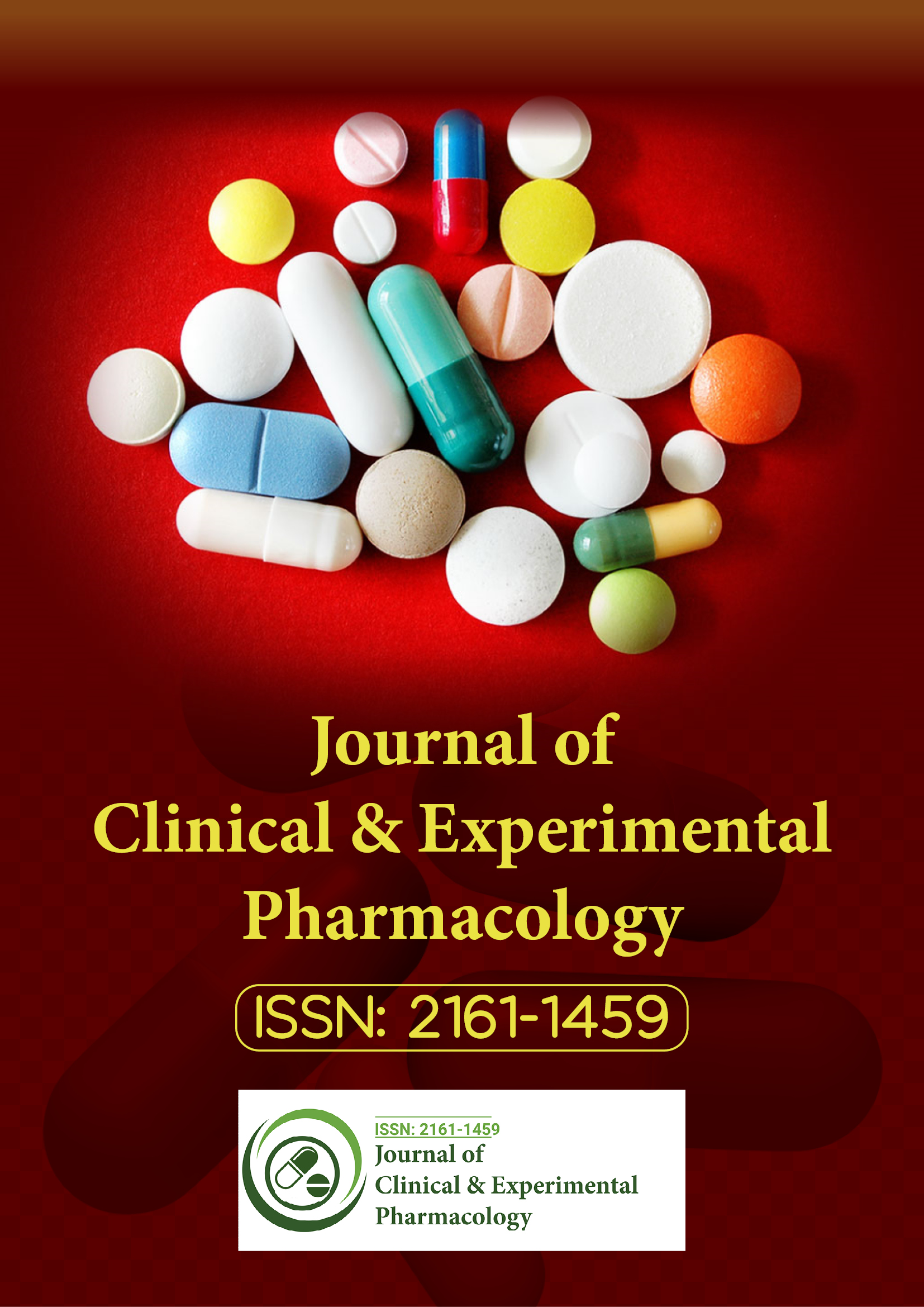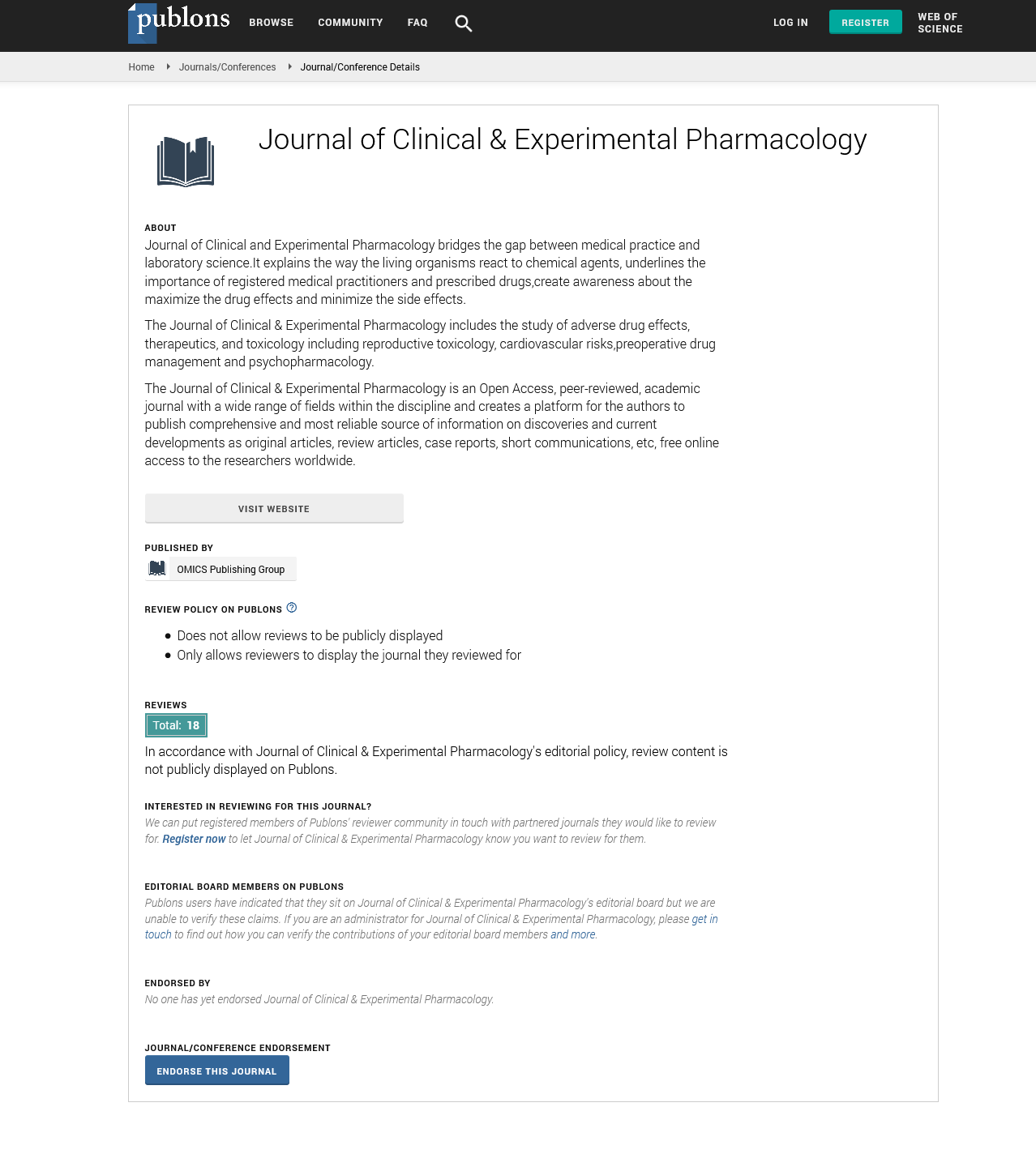Indexed In
- Open J Gate
- Genamics JournalSeek
- China National Knowledge Infrastructure (CNKI)
- Ulrich's Periodicals Directory
- RefSeek
- Hamdard University
- EBSCO A-Z
- OCLC- WorldCat
- Publons
- Google Scholar
Useful Links
Share This Page
Journal Flyer

Open Access Journals
- Agri and Aquaculture
- Biochemistry
- Bioinformatics & Systems Biology
- Business & Management
- Chemistry
- Clinical Sciences
- Engineering
- Food & Nutrition
- General Science
- Genetics & Molecular Biology
- Immunology & Microbiology
- Medical Sciences
- Neuroscience & Psychology
- Nursing & Health Care
- Pharmaceutical Sciences
Neonicotinoids as a potential threat to honey: Liquid chromatography analysis
World Congress on Pharmacology
July 20-22, 2015 Brisbane, Australia
Pavle Jovanov
Posters-Accepted Abstracts: Clin Exp Pharmacol
Abstract:
Neonicotinoids are a relatively new class of the insecticides chemically related to nicotine. In less than 20 years, neonicotinoids become the most widely used class of insecticides. Their presence now accounts for at least one quarter of the world insecticide market. Different studies in Europe and USA have demonstrated that sub lethal amounts of neonicotinoids cause disorientation, reduced communication, impaired learning and memory, reduced longevity and disruption of honeybee brood cycles. Moreover, residues of these insecticides may be found in the final products of bees such as honey, pollen, beeswax, propolis etc. The European Commission has banned the use of imidacloprid, thiamethoxam and clothianidin in crops attractive to pollinators in 2013 emphasizing the awareness of potential harmful impact of the neonicotinoids on honeybees and their products. Therefore, monitoring and determination of trace levels of the neonicotinoids in honey are necessary and demands highly efficient, selective and sensitive analytical techniques. The aim of this study was to develop and optimize analytical methods based on liquid chromatography with dispersive liquid-liquid microextraction (DLLME) and QuEChERS sample preparation procedures for the simultaneous analysis of seven neonicotinoids (dinotefuran, nitenpyram, thiametoxam, clothianidin, imidacloprid, acetamiprid and thiacloprid) in honey samples. The liquid chromatographic conditions were optimized by Response Surface methodology with Box-Behnken design and Derringerīs desirability. The optimized method was validated to fulfill the requirements of SANCO/12495/2011 standard for both sample pretreatment procedures. For the first time more than 100 honey samples from Republic of Serbia were analyzed.

